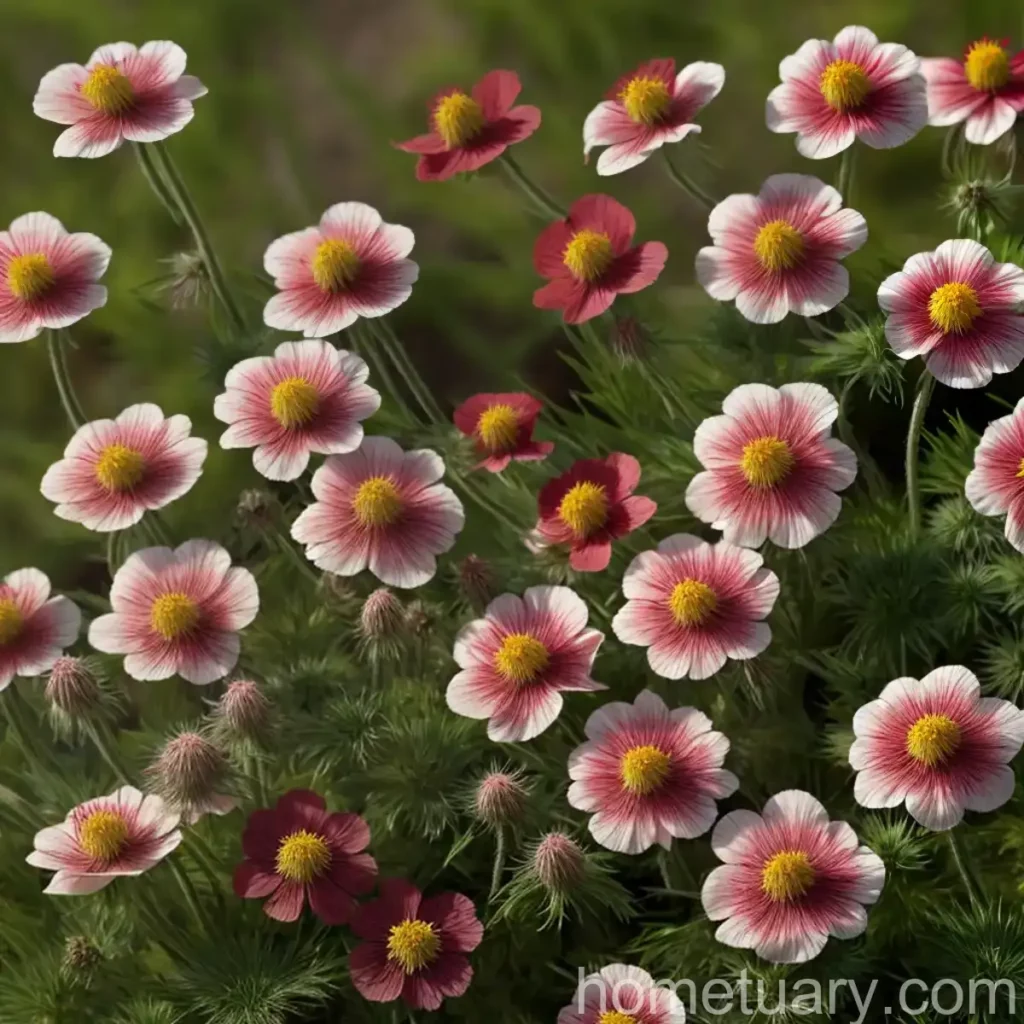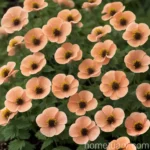Prairie Smoke (Geum Triflorum): A Fascinating Wildflower
In the vast and intricate world of plant species, Prairie Smoke, scientifically known as Geum triflorum, stands out for its unique characteristics and diverse uses. This resilient wildflower is native to North America and is recognized for its ecological importance, aesthetic appeal, and cultural significance. In this comprehensive guide, we will delve into the intricacies of Prairie Smoke, exploring its cultural uses, optimal growing conditions, propagation methods, common diseases, and more. Join me as we unravel the captivating story of this enchanting plant and gain valuable insights into its care and cultivation.
What is Prairie Smoke (Geum Triflorum)?
Prairie Smoke, also referred to as Three-Flowered Avens, is a perennial wildflower belonging to the Rosaceae family. This captivating plant is native to various regions of North America, including the prairies and open woodlands of the United States and Canada. It is characterized by its unique appearance, with nodding, bell-shaped flowers and feathery, pink-tinted seed heads that emerge in spring and early summer.
Prairie Smoke Plant Characteristics
The Geum triflorum plant is known for its distinctive features, which contribute to its allure and ecological significance:
- Flower Structure: Prairie Smoke produces elegant, nodding flowers with vibrant colors and intricate petal arrangements.
- Foliage Color: The foliage of Prairie Smoke is characterized by varying shades of green, complementing the overall aesthetic appeal of the plant.
- Growth Habit: This perennial wildflower exhibits a clumping growth habit, forming attractive mounds of foliage and flowering stems.
- Foliage Texture: The foliage of Prairie Smoke is delicate and finely textured, adding a sense of grace and intricacy to the plant’s overall appearance.
Now that we have gained a basic understanding of the visual and structural aspects of Prairie Smoke, let’s delve deeper into its fascinating qualities, uses, and care requirements.
Key Takeaways – Prairie Smoke (Geum Triflorum)
Before we embark on an in-depth exploration of Prairie Smoke, it’s essential to summarize the key takeaways that will guide our discussion:
Prairie Smoke Plant Care
- Optimal growing conditions
- Watering needs
- Sunlight requirements
- Soil preferences
- Fertilization guidelines
- Pruning techniques
Prairie Smoke Flower Information
- Flowering period
- Flower structure
- Foliage color
- Seasonal changes
Prairie Smoke Plant Uses
- Cultural uses
- Medicinal properties
- Landscape and garden design
- Ecological role and wildlife habitat
Now, with our roadmap clearly defined, let’s immerse ourselves in the captivating world of Prairie Smoke and uncover the intricacies of caring for and appreciating this remarkable wildflower.
Culture
Geum Triflorum Growing Conditions
Prairie Smoke thrives in specific environmental conditions, making it essential to understand its unique needs for successful cultivation.
Water
- Optimal Moisture Levels: Prairie Smoke flourishes in well-drained, moist soil, particularly during its active growing season. However, it is crucial to avoid waterlogged conditions, as excessive moisture can lead to root rot and other detrimental effects.
Sunlight
- Light Requirements: This wildflower thrives in partial to full sunlight, preferring at least 6 hours of direct sunlight per day. Adequate exposure to sunlight is essential for robust growth and the development of vibrant flowers and foliage.
Soil
- Soil Type: Prairie Smoke prefers loamy or sandy soil with good drainage. The ideal soil pH ranges from slightly acidic to neutral, providing a stable and conducive growing medium for the plant.
Fertilizer
- Fertilization Practices: While Prairie Smoke does not typically require heavy fertilization, applying a balanced, all-purpose fertilizer in spring can support healthy growth and flowering.
These fundamental aspects of Prairie Smoke’s cultural requirements serve as the cornerstone for successful cultivation and nurturing of this captivating wildflower.
Uses
Prairie Smoke Plant Uses
Prairie Smoke holds significant cultural, ecological, and medicinal value, contributing to its multifaceted uses and applications.
Cultural Uses
- Aesthetic Appeal: Prairie Smoke’s enchanting flowers and feathery seed heads make it a popular choice for ornamental and landscaping purposes, adding a touch of natural elegance to gardens, meadows, and native plant landscapes.
- Symbolism: In various indigenous cultures, Prairie Smoke holds symbolic significance, often representing resilience, endurance, and the beauty of native flora.
Medicinal Properties
- Traditional Medicinal Uses: Certain indigenous communities have utilized Prairie Smoke for its potential medicinal properties, employing it in herbal remedies for specific ailments and health conditions.
Landscape and Garden Design
- Ecological Landscaping: Due to its ecological importance and aesthetic appeal, Prairie Smoke is often incorporated into native landscaping designs, contributing to biodiversity and the preservation of native plant species.
Understanding the diverse uses and cultural significance of Prairie Smoke sheds light on its broader impact and relevance in various spheres, from horticulture to traditional healing practices.
Care
Geum Triflorum Plant Care Practices
Maintaining optimal care practices is vital for the health, vigor, and longevity of Prairie Smoke, enabling it to thrive in diverse settings and contribute to its ecological role.
Pruning
- Pruning Technique: Minimal pruning is generally required for Prairie Smoke. However, removing spent flowers and tidying up the plant can promote continued flowering and a neat, visually appealing appearance.
Propagation
- Propagation Methods: Prairie Smoke can be propagated through seed sowing and division. These straightforward methods allow for the expansion of existing plantings and the propagation of new generations of this captivating wildflower.
Container Popularity
- Container Planting: While Prairie Smoke is well-suited to outdoor landscapes and naturalistic plantings, it can also thrive in containers, providing flexibility for gardeners with limited space or those seeking to showcase its beauty on patios and balconies.
Understanding the optimal care and cultivation practices for Prairie Smoke empowers gardeners and enthusiasts to nurture this remarkable wildflower and appreciate its intrinsic beauty and ecological contributions.
Common Diseases
Prairie Smoke Common Diseases
While Prairie Smoke is known for its resilience, it is susceptible to certain diseases and issues that require attention and proactive management.
Disease Diagnosis
- Root Rot: Prolonged periods of excessive moisture or waterlogged soil can lead to root rot in Prairie Smoke. Symptoms include wilting, yellowing foliage, and stunted growth. Addressing the underlying moisture issues and improving drainage are crucial for mitigating this disease.
Common Pests
- Aphid Infestations: Aphids can occasionally target Prairie Smoke, feeding on the plant’s sap and causing damage to the foliage. Regular monitoring and the application of insecticidal soap can help control aphid populations and prevent significant damage.
By recognizing and addressing common diseases and potential pest issues, gardeners can safeguard the health and vitality of Prairie Smoke, ensuring its continued beauty and ecological contributions.
Botanist’s Tips
Expert Insights into Prairie Smoke (Geum Triflorum)
Drawing from the expertise of botanists and horticulture specialists provides invaluable insights into the cultivation, conservation, and appreciation of Prairie Smoke.
Fun Facts
- Internode Length: One intriguing aspect of Prairie Smoke is the variation in internode length, contributing to its unique growth patterns and structural diversity.
Botanical Guidance
- Species Diversity: Various subspecies and regional varieties of Prairie Smoke exist, showcasing a rich diversity within the Geum triflorum species.
By harnessing the knowledge and expertise of botanists, enthusiasts can gain a deeper appreciation for Prairie Smoke and its broader botanical significance, ecological relevance, and unique characteristics.
Prairie Smoke: A Treasured Wildflower
Prairie Smoke, with its captivating flowers, ecological significance, and cultural uses, represents a remarkable contribution to the natural world. From its resilient growth habit to its diverse uses in landscaping and traditional practices, this wildflower continues to captivate and inspire a deep appreciation for native plant species.
Links to External Resources
- USDA Plant Database: Geum Triflorum
- North American Native Plant Society
- Royal Horticultural Society: Perennial Plant Association
As we embrace the enchanting story of Prairie Smoke, let us continue to celebrate and steward the diverse array of native plant species, preserving their beauty, ecological importance, and cultural significance for generations to come.















